Mentor
magic Program helps Shelburne Community School kids

Page 6

magic Program helps Shelburne Community School kids

Page 6
One of Burlington’s most prominent property owners is making his way to Route 7 in Shelburne with a 33-unit multi-family and townhouse project.
Bill Bissonette, owner of Bissonette properties, owns and operates more than 300 apartments in Burlington’s Old North End and New North End and Winooski. The company website boasts the family owned business of over 30 years with “high quality apartments and a wide range of availability and affordability as well as high class custom designed and renovated homes.”
Properties listed on its website range anywhere from studio apartments at a $1,500 monthly rent to entire four-bedroom homes at $4,750 a month in addition to utility payments — gas, electric and internet — and additional add-on payments for trash and water.
These numbers look to be on par with median rent prices in Shelburne which, in 2019, reached a high of $1,730.
The proposed project site is a 1.92-acre lot located on 3807 Shelburne Road in the green corridor district and stormwater overlay district. According to town records, the existing four-bedroom, two-bathroom single-family home and detached garage that currently sits on the property was bought on June 6, 2021, for $275,700. The home is currently listed on Bissonnette properties website for rent beginning in June at $3,600 per month.
The development plan for the property proposes two residential building structures with a total of 33 units. The first residential building fronts Shelburne Road and consists of nine attached townhomes. Parking for the townhomes includes one interior garage space and one exterior space in

Page 13
 LIBERTY DARR STAFF WRITER
LIBERTY DARR STAFF WRITER
On Feb. 8, Arrowwood Environmental presented Shelburne’s planning and natural resources and conservation committees an analysis of forested wildlife habitats in town as a guide to ranking critical conservation projects as the staff begins to overhaul the town’s zoning bylaws.
The town’s natural resources and conservation committee asked the town to undertake the inventory after learning about work the firm had done for neighboring towns and appealed to the planning commission to support a report that could “help us to be able to identify wildlife corridors and other kinds of resources,” committee chair Gail Albert said.
“Shelburne’s land is somewhat fragmented because of development that’s already occurred,” she said. “In order for animals to be able to reach other parts of their habitat, they need to have corridors that allow them to freely nest or feed and get back to their home. Our goal was to be able to identify those places and there are many of them here in Shelburne.”
Arrowwood Environmental conducted a “habitat block” assessment that was consistent with directives laid out in Vermont’s Act 171, which was passed in 2017, that directs municipalities to consider forest and habitat blocks in the municipal planning process. According to the Vermont Agency of Natural Resources, municipalities seeking to have town plans approved by their regional planning commission
must include a future land use map and language that identifies state, regional or locally significant forest blocks and habitat connectors.
Albert explained that the maps given in the Arrowwood report will help the development review board and planning commission better identify critical connective links to reduce forest fragmentation and support essential ecological functions.
Habitat blocks are areas large enough to provide habitat, either permanently or seasonally, for wider ranging species of wildlife typically found in Shelburne such as bobcat, red and gray fox, whitetailed deer, river otter and fishers. These species of wildlife require larger areas and


McCabe’s Brook has poor water quality. The brook originates near Charlotte Central School, passes through Charlotte and east of Earthkeep Farmcommon. It is visible as it passes under Route 7 in Shelburne near the Vermont Day School and it parallels the Ti Haul Path before draining into the LaPlatte River just upstream from its mouth in Shelburne Bay.
Runoff — stormwater discharges and stream erosion near the Shelburne Village, combined with upstream agricultural runoff and stream erosion — has led to phosphorus levels in McCabe’s Brook that exceed the state criterion.
The Vermont Department of Environmental Conservation and U.S. Environmental Protection Agency have deemed McCabe’s Brook as “impaired” in its downstream stretches by excess nutrients, as it does not adequately support aquatic life.
To help address this problem, Lewis Creek Association received a grant to help reduce nutrient levels in the brook and to develop designs for three projects.

The engineering firm SLR, in collaboration with the towns of Shelburne and Charlotte, the Vermont Department of Conservation, as well as private landowners, will develop and prioritize the list of projects. The total list of more than 30 projects included everything from floodplain resto-
ration and tree plantings to rain gardens, dam removal and swirl
separators to remove sediment and some phosphorus from water.
The project team ultimately chose three projects — two swirl separators and a series of settling basins — to remove sediment from water before it reaches McCabe’s Brook.
To learn more about the problem and what landowners can do to improve water quality, watch a 17-minute presentation on Lewis
Creek Association’s website at bit.ly/lca-wq-videos and bit.ly/ lca-aots.
This project has been funded by an agreement awarded by the Great Lakes Fishery Commission to New England Interstate Water Pollution Control Commission in partnership with the Lake Champlain Basin Program.
On the site of Harbor Place Motel on Shelburne Road, the Champlain Housing Trust will develop 26 condominiums for shared equity homeownership, creating a new mixed-income neighborhood that will also include 68 affordable apartments, thanks to $2.6 million in funding from Vermont Housing and Conservation Board.
The 26 new homes will be built by Snyder Homes beginning in August 2023 with expected completion in August 2024.

Together with funding from the Vermont Housing Finance Agency and other sources, the condominiums will be affordable to low- and moderate-income households, selling for well below market prices.

Gun rights advocates have few qualms with most of a new, wide-ranging bill before the Senate Judiciary Committee — raising concerns about the constitutionality and effectiveness of several of the bill’s measures.
The bill, S.4, includes a litany of restrictions on those accused of drug and human trafficking — or who enable them — and on fugitives of justice and people subject to stalking and domestic abuse stay-away orders. Among other things, the bill includes limitations on accused offenders owning guns and an expansion of records used for background checks.
What the Second Amendment-focused groups have a problem with: the bill would make straw purchases — when a person buys a gun for someone who can’t, already a federal offense — illegal in Vermont. It would also criminalize defacing a gun’s serial number and bar people under 21 from possessing semi-automatic firearms.
With the year’s legislative session entering its third week, the Senate Judiciary Committee remains in a contentious debate about the bill, the first hearings for which took place two weeks ago.
The committee held more rounds of testimony this week featuring several gun rights advocates and leaders in the fields of combating domestic violence and human trafficking.
The gun rights advocates that testified last Wednesday outlined their issues with the sections of the nine-part bill that propose restrictions on gun ownership and purchasing.
Gun rights advocates raised concerns over the constitutionality of the bill following the U.S. Supreme Court’s decision in June in the case New York State Rifle & Pistol Association v. Bruen, which expanded the right of law-abiding gun owners to possess guns outside the home. Writing the majority opinion, Justice Clarence Thomas affirmed that the Second Amendment is not “a second-class right.” Gun rights groups in Vermont say measures like those in S.4 would likely be challenged in courts because of the federal ruling.
In response to a list of court precedents on gun ownership
presented in Wednesday’s hearings, Sen. Dick Sears, D-Bennington, one of the three sponsors of the bill, expressed concerns about the recurrent trend of mass shootings in America and what he sees as the Supreme Court’s complacency on gun-related cases.
“Times are changing,” Sears said. “Every day there’s another mass shooting and it’s really alarming to have, in my opinion, the United States Supreme Court going backwards.”
To some who have followed Vermont politics, Sears might seem an unlikely senator to spearhead a bill restricting gun ownership.
“I’m someone who always had an A+ from the NRA until this election cycle and I dropped to a C,” he said at the hearing last week. According to Vote Smart, which puts candidate rankings on a 0 to 100 scale, Sears’ approval rating from the National Rifle Association went from 100% in 2016 to 42% in 2022.
Other witnesses Wednesday included Eric Davis, president of Gun Owners of Vermont, a proudly uncompromising Second Amendment–supporting group, who criticized the bill’s description of the types of guns that would be banned for all residents under the age of 21, as well as the ban itself.
“From a practical standpoint, this type of blanket ban will have very little, if not zero, effect on the ability of violent and/or youthful
offenders to obtain such a weapon for nefarious purposes,” Davis said.
Witnesses in the committee that day raised additional concerns about the straw purchasing and serial number measures in S.4.
One of them, Chris Bradley, the president of the Vermont Federation of Sportsmen’s Clubs, said in an interview afterward that “not only will (the straw purchasing provisions) become redundant, it’s putting additional tasks on our courts or law enforcement in our prisons.”
“If, in fact, our courts are actually prosecuting these things,” he continued.
Bradley in his testimony and in the interview emphasized that
straw purchasing, and the accompanying crime of lying on a federal document, are already prosecuted federal crimes.
In an interview, Sears responded to Bradley’s critique by saying S.4 “just allows Vermont to prosecute if the feds don’t want to. There’s been tremendous cooperation between the feds and the police departments.”
According to Sears, the drafters of the bill were responding to the concerns raised by local law enforcement in Vermont.
“It’s really a bill that developed in discussions with the chief of police in Bennington, the town manager, the state’s attorney and others in the community,” said Sears, whose district includes the
town.
When asked if the bill had been met with serious opposition since its initial reading two weeks ago, Sears chuckled and looked in the direction of the gun rights advocates who had testified that morning. “There’s a few things where there’s no pushback, but most of it got pushback from some quarters,” he said.
He said the bill will be revised. “How much further,” he said, “I don’t know.”
Aubrey Weaver is a reporter with the Community News Service, a program in which University of Vermont students work with professional editors to provide content for local news outlets at no cost.
Environmental advocates across the state head into this year’s legislative session with the goal of updating Act 250 — Vermont’s land use and development law — to protect one of the state’s biggest natural resources: working forests.
Advocates believe the wide-ranging 1970 law doesn’t sufficiently regulate the impacts of large development on forest lands, causing forest fragmentation and loss, according to Jamey Fidel, forest and wildlife director at the Vermont Natural Resources Council, a nonprofit.

“There’s no real attention to whether there’s going to be any future role of that forest when the
land is being developed, as well as (it) being available as working lands,” Fidel said. “Will they be able to provide habitat for wildlife (in addition to preserving timber sources)? So, this is a way of zooming out and saying, let’s focus on some good site design.”
In the last decade Vermont has lost as much as 10,000 acres a year of its forests due to permanent development and suburban sprawl, according to the U.S. Forest Service.
“Our policies in Vermont haven’t caught up to this change in trajectory and trend,” said David Mears, executive director of Vermont Audubon Society, the conservation nonprofit focused on birds and their habitats. “There’s a couple of different ways in which we can lose these forests: They
Sunday, February 19th
can be lost to permanent development, which is the worst-case scenario. Box stores, subdivisions and the like are a permanent loss of forest land as well.”
In the past environmental groups have tried getting multiple bills on the issue of forest fragmentation through the legislature, including last session’s H.606, which made it through the Legislature but was vetoed by Gov. Phil Scott.
“The bill would have put us on a path to protecting 30 percent of Vermont’s landscape by 2030, 50 percent by 2050, including 10 percent of the state,” said Zack Porter, executive director of the activist group Standing Trees, which aims to protect and restore
“This type of blanket ban will have very little, if not zero, effect on the ability of violent and/or youthful offenders to obtain such a weapon for nefarious purposes.”
— Eric Davis
Shelburne youth lacrosse registration is open. This program is offered to Shelburne kids in grades K-8. Registration fee is $55 though the Deadline of Monday, March 6.
Kids in grades three through eight are required to get a U.S. Lacrosse membership to play in the league, which is separate from the registration fee. Players must provide their own equipment.
Children in kindergarten and grades one and two will have coed programs and are not required to get a U.S. Lacrosse Membership. Registration fee for this age group includes a mini lacrosse stick.
Full program details and registration information at bit.ly/3RRT8nX
The deadline to register is March 1. Visit bit.ly/3Xr9wwM for program details and online registration.
Don’t wait and miss out on a fun season ahead. You can register online or through the recreation office. Visit bit.ly/40KKJa1 for complete program details.
Middlebury historian Bill Hart and others pay tribute to Rep. Alexander Twilight of Brownington, elected in 1836 as the nation’s first legislator of African descent at a 2023 Farmers Night Concert Series called “The Enigmatic and Charismatic Alexander Twilight with historian Bill Hart on Wednesday, Feb. 22, 7:30 p.m. in the House chamber at the Vermont Statehouse.
Hart and others, including saxophonist and composer Ras Moshe Burnett, explore the complicated
A former Central Vermont doctor, who was ordered by a federal jury last year to pay $5.25 million to a former patient that he secretly used his own sperm instead of the intended donor, is now being sued on grounds of a fraudulent transfer of his home to help avoid paying the judgement.
Dr. John Boyd Coates III of Shelburne, who had his medical license revoked by the state in February 2022, initially denied the charge under oath, but during his civil trial in federal court last March he admitted he had lied. Coates testified the claims made by the mother were true: He had secretly used his sperm to impregnate her and never told her.
story behind this energetic and inspired educator. To complement the evening’s festivities Burnett will premiere a composition titled “Alexander Twilight.”
The entire Farmer Night Concert Series is presented by the Vermont Legislature and returns to for the first time since the pandemic interrupted the performances in March 2020. This year’s offerings include 12 weekly Wednesday performances, with the exception of a break for Town Meeting in early March.
Advertising Wendy Ewing wendy@shelburnenews.com (802) 985-3091 x12
Advertising Director Judy Kearns judy@otherpapersbvt.com
(802) 864-6670 x21
Managing Editor Dylan Kelley dylan@stowereporter.com
News Editor Tommy Gardner
Staff Writers
Aaron Calvin Corey McDonald
Liberty Darr
Production Manager
Stephanie Manning stephanie@shelburnenews.com
Editor/Publisher Gregory Popa gpopa@stowereporter.com
Billing inquiries Leslie Lafountain leslie@stowereporter.com (802) 253-2101
Advertising submission deadline: Friday at 5 p.m. advertising@shelburnenews.com classifieds@shelburnenews.com
Editorial submission deadline: Friday at 5 p.m. news@shelburnenews.com
Calendar submission deadline: Friday at 12 p.m. news@shelburnenews.com
Contact: 1340 Williston Road South Burlington, VT 05403 (802) 985-3091

The woman delivered a daughter Dec. 27, 1977.
Burlington lawyers Celeste Laramie and Jerry O’Neill of Gravel & Shea, on behalf of the plaintiff, filed the new lawsuit this week against Coates, his wife and a trust created in her name about seven weeks after the jury verdict, U.S. District Court records show.
Ownership of their home at 132 Point View Drive was shifted to the Barbara Coates Trust to thwart paying the judgement, the new lawsuit maintains.
The home and the 3.91 aces
were assessed at $1,170,800 in 2022, according to Shelburne land records.
The trust paid no consideration to Coates, who is in his 80s, and his wife for the property, the lawsuit said.
Meanwhile Coates and his wife, Barbara retain possession and control of the home they had bought in January 2008, records note. The Barbara Coates Trust lists the Shelburne home as its legal address and the couple still reside there, records show.
Senior Judge William K. Sessions, who presided at the trial, reduced the judgment to $2.2 million dollars in September 2022 following some post-trial motions and hearings. Coates’s victim agreed to accept the reduced amount and he was given one-month to further appeal.
the new lawsuit notes.
Before the trial last year to determine how much Coates should pay in damages, the defense dropped its initial claim that he was the child’s the biological father.
The eight-member jury awarded $250,000 in compensatory damages for injuries and $5 million in punitive damages
The Coates home and the 3.91 aces were assessed at $1,170,800 in 2022, according to Shelburne land records.
The jury deliberated about 3.5 hours over two days before returning the verdict.
Coates practiced from 1974 to 1986 in Washington County, including at Central Vermont Medical Center and the office of Associates in Gynecology and Obstetrics in Berlin.
Coates never appealed the $2.2 million figure, and the woman began efforts to collect the final judgement, the lawsuit said.
Barbara Riva Coates attended the civil trial and was present when the jury returned its verdict,
Coates also was associated with University of Vermont Medical Center and Mountain View Physicians Office in Colchester from 1986-2009, records show. Coates also is a defendant in another medical malpractice lawsuit with identical claims. She also had a daughter from sperm
See COATES on page 16
the fact that I’m the product of an interracial marriage myself and helping Vermont lead the nation in celebrating love.
compassion and generous spirit is being tested, and it’s important we remember to choose love and humanity.
I came to you as a teenager with a suitcase and a heart full of hope, and you embraced me for who I am — the daughter of an Indian immigrant father and Jewish American mother who grew up in an Irish pub and wasn’t afraid to stir up necessary trouble.

You helped me find my calling with a deep sense of community, where we don’t care how many cars you have, but how many cars you have pulled out of a ditch. Where I could join the Legislature at 22 years old and help pass the Marriage Equality Act, honoring
You introduced me to the love of my life, who grew up on a dairy farm and just finished tapping the family sugarbush in this unseasonably warm weather. And now we are growing our family, welcoming a new Vermonter to the world in May.
We do have our work to do, Vermont. On our coldest day thus far this year, we were still reckoning with nearly 3,000 homeless Vermonters.
We had the highest rate of growth in homelessness of any state in the country during the pandemic, but we also had the lowest number of people without shelter. Our
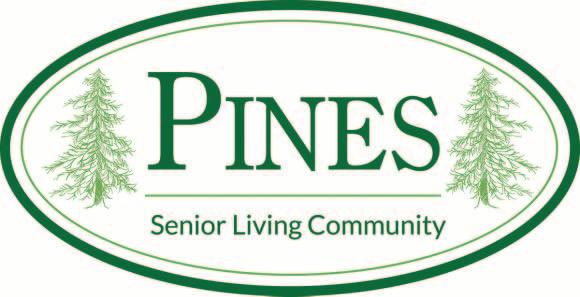
In a time of great turmoil in our country, our motto of Freedom and Unity matters even more. We must continue to welcome all comers and ensure that people of all walks of life find a place to call home here. I know we are up for the challenge, and we will face it as we always do — together. Happy Valentine’s Day, Vermont. Let us always choose love.
Kesha Ram Hinsdale, a Democrat from Shelburne, serves the towns of South Burlington, Shelburne, Charlotte, Hinesburg, Milton, Burlington, St. George, Westford, Underhill, Jericho, Richmond, Winooski, Williston, Essex and Bolton in the Legislature.
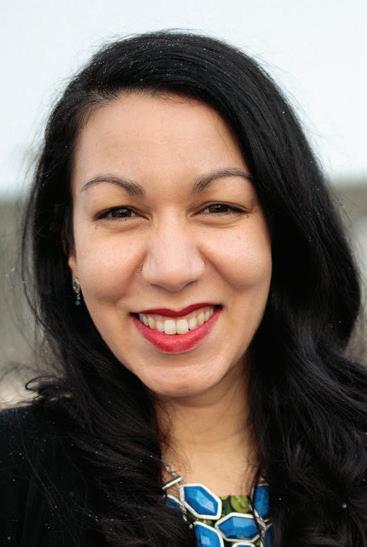
Please support water-metering questions on town meeting ballot
To those who do not know me, my name is Bart Sherman, and I am the new superintendent of the Shelburne Water Department. The department currently consists of Chad Racine, who has served the town of Shelburne for over 21 years, our newest employee Andrew Driver, and me.
For those who do not know the scope of our department, we are responsible for approximately 65 miles of underground piping, over 400 fire hydrants and close to 3,000 individual services that provide water to each of your homes and businesses.
At the water department’s and water commission’s request, the selectboard has placed an article on the March Town Ballot for a water meter upgrade. This is a program to update the entire metering system throughout town.
Times being as they are, I understand that the figure ($1,150,514) may come as a shock, but I assure you it is very necessary. As you know, we read meters quarterly. However, what you may not know is that it takes two of our employ-
ees a full month each quarter to do these readings. That is two employees dedicated to this singular task for four weeks four times per year, totaling roughly 1,300 hours dedicated to this one task.
This new system will reduce that to less than one week per quarter, saving over 1,000 hours for other essential tasks, and prevent-
ing the department from having to hire more staff. From a technological standpoint, the current metering system has exceeded its 20-year lifespan and is costing ratepayers in frequent repairs and lost revenue to the department due to inaccurate or failing water meters.
I dreamed that I went to the city of gold, To Heaven resplendent and fair; And, after I entered that beautiful fold, By one in authority there I was told That not a Vermonter was there!
“Impossible,” said I. “A host from my town Have sought this delectable place, And each must be here with a harp and a crown, A conqueror’s palm and clean linen gown Received through merited grace.”
The angel replied, “All Vermonters come here When first they depart from the earth, But after a day or a month or a year They restless and lonesome and homesick appear And sigh for the land of their birth.
“They tell of its many and beautiful hills Where forest majestic appear; Its rivers and lakes and its streams and its rills Where nature the purest of water distills, And they soon get dissatisfied here.”
“They tell of ravines, wild, secluded and deep, Of clover-decked landscapes serene, Of towering mountains, imposing and steep Adown which the torrents exulting leap Through forests perennially green.”
“We give them the best that the Kingdom provides, They have everything here that they want; But not a Vermonter in Heaven abides, A very short time period here he resides, Then hikes his way back to Vermont!”
 — E. F. Johnstone
— E. F. Johnstone
COURTESY PHOTOS



To the Editor:
January was National Mentoring Month, so now is a perfect time to reflect on the myriad of worthwhile outcomes that come from young people having engaged, positive role models in their lives. As the Connected Youth mentoring coordinator at Shelburne Community School, I am thrilled to recognize National Mentoring Month and the amazing contributions of our mentors.
We officially recognize mentors by publicly saying thank you, but I know the impact of mentoring efforts requires more than a month to show the proper level of appreciation. The adults who are part of Shelburne’s mentoring program are responsible for making deep and lasting impacts


that are felt every day in our school and community. Shelburne is better off because of these mentors.
Shelburne is fortunate to have more than 50 fabulous and dedicated mentors who spend almost an hour a week with a student. Our mentors embrace the power of relationships. They know one person can change a young person’s life. They are empowered to make a difference.
Mentors have seen growth, boosted the trajectories of young lives and made the community stronger. I am proud of them. They should rightly be proud of themselves.
There’s reciprocity in healthy mentoring relationships where both mentor and mentee develop a shared sense of purpose





and respect. Those healthy connections spill out to the world at large, where positive, confident youngsters become amazing adults. On behalf of the entire Shelburne Community School community, it’s my pleasure to extend a massive dose of


SHERMAN continued from page 5
I would like to stress to everyone that though this measure is on the town ballot as required, the financing will be carried by only the water-system ratepayers. We are asking the town to lend us their credit to fund this highly important project, but we cannot ask them to pay for it.
thanks to those who’ve made the mentoring program truly remarkable.
Alice Brown Connecting Youth mentoring coordinator Shelburne Community SchoolFeel free to reach out at any time. I am happy to answer all questions, and I hope you show your support to yourselves as well as the water department on Town Meeting Day.
Bart Sherman is superintendent of the Shelburne Water Department



We humans can’t help but judge. It’s as if our eyes themselves have opinions. Much of the time, we unconsciously categorize what we see, feel or experience by labeling it as good or bad, right or wrong, like it or don’t like it, and so on. These evaluative thoughts are instantaneous, flowing whether we like it or not. But what if our first thoughts aren’t accurate, helpful, or even what we truly believe?
I see these automatic thoughts as my internal radio station, always tuned in, even if I don’t recognize it at the moment. Its broadcast covers all topics from the weather, dinner, politics, my hair, the ending of “The White Lotus,” news headlines, what my sister said, what your sister said, an upcoming deadline, a recent event, how my pants — or your pants — fit to the book I’m reading.
These opinions are unbidden and endless. Uncontrollable, really. But that’s OK because there’s something even better waiting in the wings. The power of our second thought. That’s what matters. What we think next.
Let’s face it, often our first thought is negative. Probably tracks back to our origins where we were constantly having to think what life-threatening danger awaits, like an attacking tiger. Or a Smilodon, a saber-tooth cat. You see, my first thought was tiger, but then my second thought was, “Were there even tigers in prehistoric times?”
So, I Googled it and learned about Smilodons. Isn’t that the entire point? Question your first thought. Consider your second thought as Googling your own self as an investigation into what you actually believe. And, even better, being willing at times to reach for bigger understandings or deeper truths.



If the first thought is primal and reflexive, the second thought is chosen and created. That’s where mind-blowing potential exists. A second thought can bring accuracy, understanding, growth, kindness and, at the very least, self-awareness. All in one remarkable second thought. After all,
getting to what we genuinely think is much better than letting a first thought lie.

I notice many of my first thoughts are judgments born of worry, fear and anxiety. I realize that’s human. But if I want to be a human being, second thoughts are the ticket. Listening to them often guides me to a more caring way to see something, including myself.
In these days of (hopefully) rising consciousness of injustice and hate in all forms, the ability to have second thoughts is a skill worthy of encouragement. Ultimately, we are all conditioned to think about things the way we’ve always thought about them. For example, if someone was never taught about implicit bias and privilege, their first thoughts would not only be antiquated, but unfortunately hurtful to their community and detrimental to their own growth.

For me, being willing to question my first thoughts has been life changing. I remember, in my ignorance, thinking, don’t all lives matter? Or using phrases that I didn’t know were hurtful to various groups of people for their historical and cultural context.
I am profoundly grateful for the many second thoughts I’ve had about all of these. Being able to see beyond a first thought has been one of the most expansive, empathetic and constructive practices of my life. There is always something new and vitally important to learn. About ourselves. And each other.
Inevitably, this brings us to what’s next: third thoughts. Author Terry Pratchett describes them as ones “that watch the world and think all by themselves.”


My first thought to that quote was, “Huh?” Thank goodness for my second thought: Perhaps Pratchett is speaking to the possibility of melding life’s contradictions into heightened knowingness and humanity. A grand second thought, isn’t it? And my third thought? Wouldn’t that be nice.
Carole Vasta Folley’s In Musing column has won awards from the Vermont Press Association, The New England Newspaper & Press Association and the National Society of Newspaper Columnists.

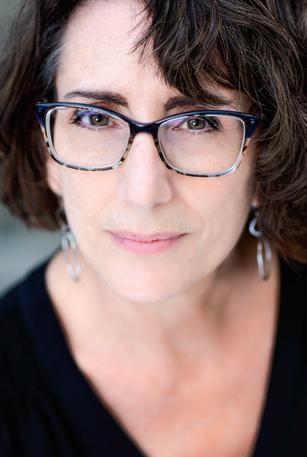



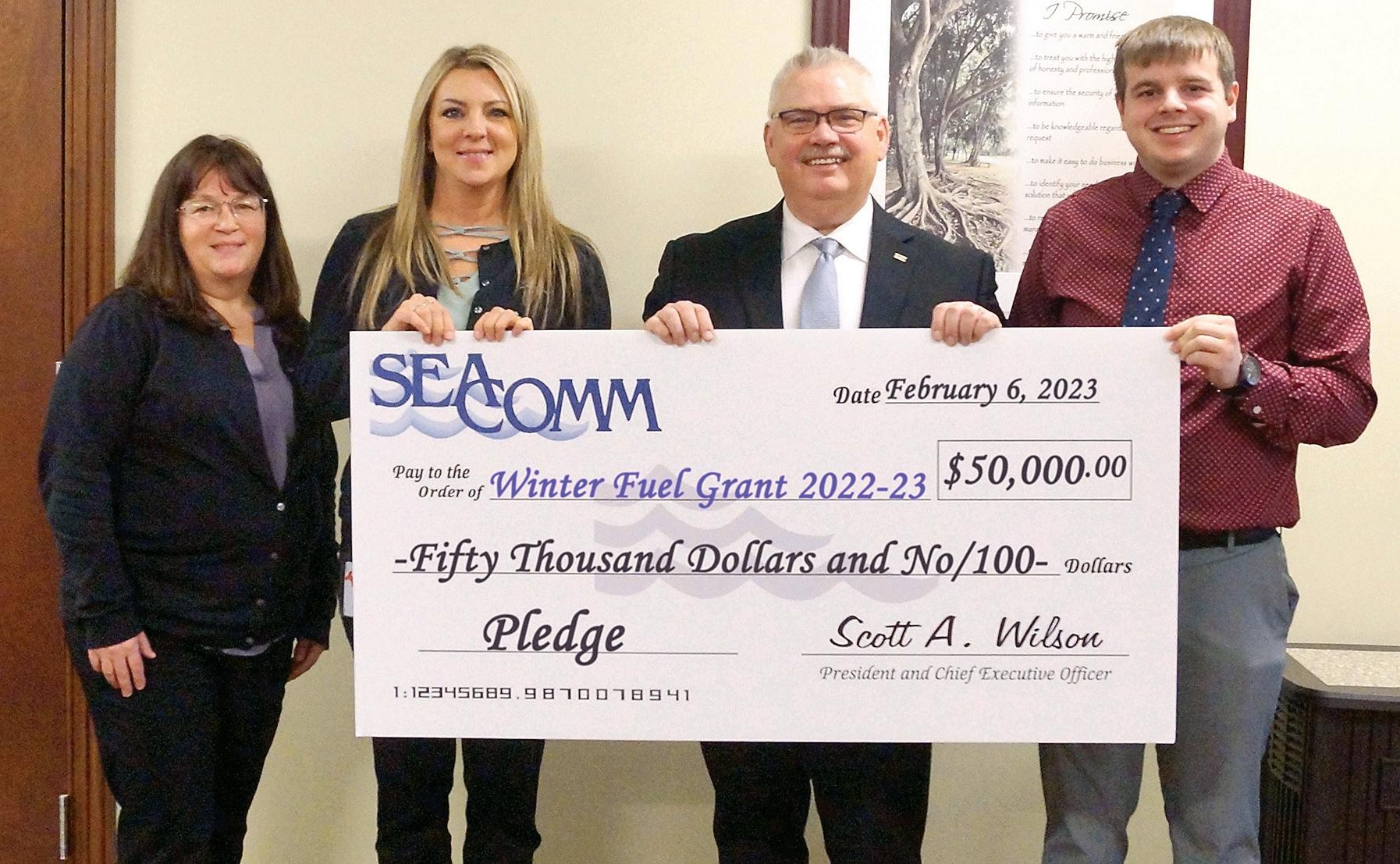
Anticipated winter chill and the rising cost of heating expenses compelled SeaComm Federal Credit Union help its members in need. Last November SeaComm pledged $50,000 to help with home heating costs. The credit union’s members were invited to apply for the grant electronically through its website, by visiting one of its nine branch locations or via mail service. With nearly 1,000 applications received across northern New York and Vermont, the credit union’s fuel grant committee selected 100 members to receive fuel grants worth $500 each. The credit union has locations in South Burlington and Essex. From left, SeaComm dealer relationship manager Danielle Uppstrom, mortgage manager Tara Cusworth, president and CEO Scott A. Wilson and loan operations representative Chandler LaPlante.
continued from page 1
the driveway for each townhome unit for a total of 18 spaces.
The second building is a multi-family structure located behind the townhome units and contains 24 units. Parking for this building includes approximately 30 underground spaces and 17 surface spaces for a total of 47 spaces, according to the application.
The units are accessed by a single curb cut for a paved drive off Shelburne Road.
As described in Shelburne’s
town plan, the project supports the town’s goals to add 25 to 50 new dwelling units per year while also supporting land use goals. The project is located in the designated “growth area 2,” where the plan says most of the town’s anticipated residential growth should occur.
“In addition to supporting an adequate supply of housing to accommodate a diverse array of residents, the project does not adversely impact the town’s scenic and natural resources or the abili-
ty of the town to provide public facilities and services,” according to the developer’s application.

“In fact, the project uses the new Form Based Zoning guidelines to create a large, open front yard in the Green Corridor Character District that will preserve open space in this district.”
Two neighboring residents, Jane Pickell — a member of the town’s bike and pedestrian paths committee — and Cyrus Amadoor, who live in an adjacent property expressed support of the
ACT
continued from page 3
forests in New England.
“And (the bill would set) a goal for 10 percent of the state to be put into wild lands management,” Porter continued. “But 10 percent compared to the 3 percent (that is conserved) today would be a major step forward. We know we must do this if we want to keep the biodiversity that we have today and if we want to give a chance to the wildlife that were extirpated from Vermont years ago.”
Environmental groups are working to push similar legislation this session, but a third of the Legislature is new, and environmental groups worry legislation will face roadblocks because fledgling lawmakers need to catch up on years-long issues.
“I think it’s very important that everyone takes the time to really understand these issues because they’re complex and interconnected,” Mears said. “At the same time, we are looking at the housing shortage, we’re looking at the challenges of workforce development. Are (legislators) making sure we have enough people to fill
the jobs in the state that are necessary in the natural resources and environmental fields?”
Advocates agree that meeting the needs of Vermont’s forests are crucial to meeting the state’s goals in combating climate change. Those goals are spelled out in the state’s climate action plan adopted in 2021, which looks to reduce greenhouse gas emissions through measures that include forest management.
“All the different kinds of ecosystems play such an important role in storing and holding carbon,” Mears said. “They also serve as a source of resilience, a strategy for us for adapting to and responding to the impact of climate. Also, a vital importance to addressing the loss of wildlife and birds that we’ve been seeing over the past several decades.”
Ciara Mceneany is a reporter with the Community News Service, a program in which University of Vermont students work with professional editors to provide content for local news outlets at no cost.
project at the Jan. 18 development review board meeting.
“Just in general, we are supportive of having more housing available,” Pickell said.
“This seems really good for Shelburne Road,” Amadoor added, equating the project to a new elderly living facility in another part of town.
This past year, concerns have been raised over the validity of the town’s form-based code, which has ultimately led to the overhaul of the town’s zoning
bylaws. Several resident groups expressed fears that if development continued within form-based code regulations the town “won’t be Shelburne, it will be more like Winooski,” resident Robilee Smith told the Shelburne News in response to a previous development proposal.

According to the Vermont Housing Finance Agency, “The lack of available homes near jobs may underlie Vermont’s continued workforce challenges.”

The town’s website currently lists seven open positions just within town offices.
The town is also working to strike a balance between needed housing and housing that remains affordable for low- or middleclass residents. The median income for renter households was estimated at $69,297 for the town compared to the median income in Chittenden County of $41,256 and a statewide number of $35,759.
The development review board had minimal feedback about the sketch plan review and are expecting an official application soon, although there is no official timeline. At this point, the town doesn’t know whether the units will have any affordable housing options.
Bill Bissonette, Bissonette Properties’ director of operations, and consultant Lucy Thayer with Trudell Consulting Engineers, did not respond to several request for comment.
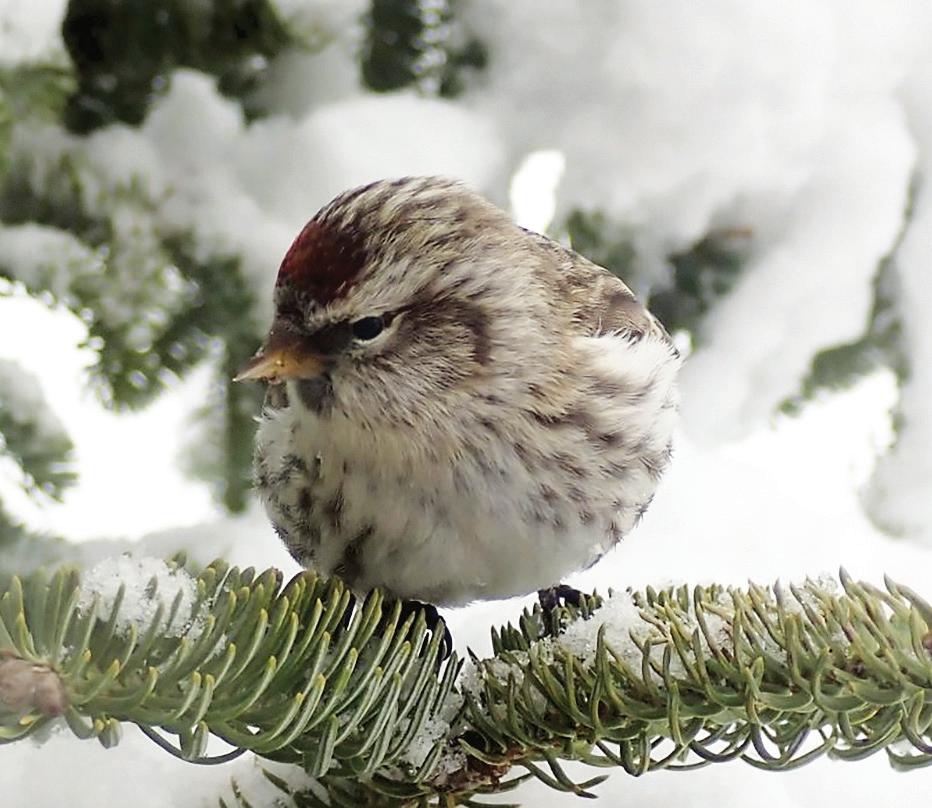
Rowland Davis of Shelburne is one of 16 new participants to the 2023 Climate Catalysts Leadership Program through the Vermont Council on Rural Development.
The new members come from across the state and will focus their time on implementing projects addressing topics such as developing town climate actions — expanding outreach regarding weatherization programs, producing an educational series on local manufacturing and making local food more equitable, affordable and accessible.
There are now 60 climate catalysts throughout the state working to foster community led projects within the climate economy.
The U.S. Attorney’s Office has launched a series of presentations

in Vermont high schools aimed at educating students on identifying, reporting and preventing hate crimes and other civil rights violations.
“Civil rights enforcement is a priority of the United States Attorney’s Office,” said U.S. Attorney Nikolas P. Kerest. “We are reaching out to Vermont youth – tomorrow’s adults – to give them the tools to recognize hate crimes or discrimination when it happens.”
“Hate crimes have a devastating impact not just on the victims, but their families and communities as well,” said Janeen DiGuiseppi, special Agent in charge of the FBI’s Albany field office.
Schools interested in hosting a United Against Hate presentation should go to bit.ly/3HnSI3Q.
Are you an artist who is interested in leveraging your talents to support asylum seekers?
The Chittenden Asylum Seekers Assistance Network is looking for artists, poets, writers, sculptors, musicians and photographers for an April fundraising event, Arts for Asylum Seekers. Participants produce and virtually share their creative work, preferably daily, throughout the month. Funds raised will be used to help asylum seekers with housing, basic living expenses, transportation, legal fees and other necessary support.
The signup deadline is Wednesday, March 8. For more information and to sign up, write to artsforasylumseekers@gmail.com.
On Sunday, April 2, Cochran’s Ski Area will hold its annual Nordic Ski Cross Race. This fun and challenging competition is for all ages and includes uphill, downhill, slalom gates, jumps and

Six Champlain Valley Union High School alumni are shaking up local stages with seamless blends of bluegrass, new grass, jazz and rock tunes with their stringed band the Tenderbellies.

Band members Colin Cope on harmonica, Matt Francis and Greg Pauza on mandolin, Luke Hausermann on bass, Chris Page and David Titus on guitar play music that takes listeners on a journey from bold and brazen to delicate and somber through tightly arranged songs and improvisational exploration with both self-written originals and covers of beloved classics.
Although all of the members pitch in on vocals, Francis explained that Cope — who was the latest to join the band in 2015 — pulled the band in a different direction “in a really good way” with his vocals that add a whole new dimension of bluesy.
Although this homegrown band recently played to a capacity crowd for its newest album release party at Four Quarters Brewing in Winooski, it’d be remiss not to mention its humble beginnings playing that first show in 2013 at the Old Brick Store in Charlotte where the band also coined the name “Tenderbellies.”
“Some of us have been friends since fifth or sixth grade, but I would say that the actual start of the band was in 2013,” said Francis. “Someone invited us to do a little show at the Old Brick Store in Charlotte and so we just kind of threw it together. Someone at that point asked us, ‘Well, what’s your name?’ and Chris just answered off the top of his head, ‘We are the Tenderbelly Bluegrass Band.’ And that’s where it started.”
Francis added that a year later the band shortened the name to just the Tenderbellies since they aren’t strictly bluegrass.
Through their nearly a decade together, the band has gone on to play at venues ranging from Higher Ground to Waking Windows, Nectar’s, the Inter-
vale’s “Summervale,” Shelburne Vineyard, the Burlington Jazz Festival and numerous other venues.
“We finally got this professional album recording done, and we’re trying to use that to hopefully launch into getting out of Vermont more,” Francis said. We have played in Boston a few times.”
The band recently played a music festival at Killington Resort during the Subaru Winterfest on Feb. 11 and opened for the Grammy nominated Infamous Stringdusters.
“If you come to see us in a live show. I would say it’s probably
50 or 60 percent original songs, and 40 percent covers,” Francis said. “I think that’s what is cool about our genre is that we do a lot of traditional folk songs that have been passed down for many years and we put our own spin on them.”
Francis said that two of the band’s biggest influences are American guitarist and bluegrass musician, Tony Rice and David Grisman, who founded a style of music called ‘dawg music,’ which makes up a majority of the composition of their newest album “One By One.”
The 11-track record is a culmination of nearly a decade
of gigging and songwriting and was recorded and mixed by Jeremy Mendicino at Lane Gibson Studios and mastered by Anna Frick. Although some members have left the Green Mountain state in years past, the album features all original members since the group always finds a way to navigate life’s twists and turns back to each other.
To catch the Tenderbellies live
in action, they are the house band at a weekly Wednesday bluegrass night at Four Quarters Brewing in Winooski.
“We try to keep it up and get some friends playing banjo and fiddle and keep it unique every week,” Francis said.
The band’s latest album “One by One” is now available on all streaming platforms and CDs can be ordered at tenderbellies.com.
Join the Shelburne Rethink Runoff Stream Team in a rain barrel workshop where you’ll be able to build and paint your own rain barrel to not only save water and money but help keep local streams clean.
The stream team is hosting a workshop to teach you how to build, paint, install and maintain a rain barrel on Friday, Feb. 24,
during two sessions, 10 a.m.-noon and 1-3 p.m. The workshops will held in Shelburne Town Center gym, 5420 Shelburne Road.
Participants who choose to paint their rain barrels can pick them up the next day between 9 a.m.-noon.
When it rains, stormwater moves quickly over impervious surfaces such as buildings and
roads, picking up pollutants like nutrients, sediment, oil, chemicals, road salt and metals. By capturing stormwater before it flows over roads urban residents can help decrease the amount of pollutants entering Lake Champlain.
The water you save in a rain barrel can be used for watering lawns and flower gardens
and washing cars or tools. Rain barrels help decrease runoff to Lake Champlain by capturing and holding rain water during a storm, and that means cleaner water for everyone.
To sign visit https://bit. ly/3WKON6N.
The cost is $40, which covers the cost of supplies. Email Adelaide Dumm with any ques-
tions: adelaide@winooskinrcd.org
Rethink Runoff, a program managed by the Chittenden County Regional Planning Commission, is an ongoing public outreach effort to reduce dirt and pollutants in stormwater runoff in the Lake Champlain Basin. The stream team is a project to engage citizens in nine Chittenden County towns.
“We try to keep it up and get some friends playing banjo and fiddle and keep it unique every week.”
— Matt Francis
Three fish caught in 2022 were certified as new state records.
In February, Swanton angler Matt Gingras landed a new Vermont record burbot while fishing on northern Lake Champlain in the West Swanton area. The burbot, caught on a live golden shiner set under a tip-up, weighed 10.9 pounds and measured 32.5 inches long with a 17-inch girth. It beat the earlier state record burbot caught in 2012 by 2.1 pounds.
Unfortunately for Gingras, his reign as the state record burbot holder lasted just two months. In early April while open water bass fishing on Lake Champlain around South Hero, Stephen Estes of Auburn, N.H., caught an 11-pound burbot casting a Ned Rig. The fish measured 34 inches in length and had a 17.5-inch girth.
In May 2022, North Hero angler Jacob Kinney was out bowfishing at night for carp on Lake Champlain and took a fish that weighed an incredible 63.4 pounds. This monster carp smashed the earlier record set just last year by Bradley DiSorda — a fish that weighed 44 pounds, 11 ounces, also taken on Lake Champlain by bow. Kinney’s new record measured 39.25 inches in length while its girth was an immense 37.25 inches.

Vermont Fish and Wildlife Department fisheries biologist Shawn Good, who administers the state’s record fish program, says Kinney’s carp is the heaviest fish ever entered in the program.
“The department started tracking state record fish in 1969, and this 63-pound carp is far and away the largest fish ever entered,” said Good. “As a matter of fact, looking through the more than 1,200 entries received over the last 53 years, seven of the 10 biggest fish on the list are carp. The other three fish in the top 10 are a muskellunge, a lake trout and a channel catfish.”
Good says that at 265,000 acres and 120-miles long, Lake Champlain offers a nearly untapped carp population that receives very little attention.
“I think that die-hard carpers, whether they fish European style, or go after them with fly gear, would be floored at what Champlain has to offer,” he added. “The lake not only produces trophy-sized fish, but it also provides consistent action for carp in the 15-to-20-pound range. It truly is a carp angler’s dream paradise.”
For more information, visit bit. ly/3HLZxMY.

with three assists and Grace Ferguson had 22 saves.
BFA-St. Albans 5, Champlain ValleyMount Mansfield 2: The Champlain ValleyMount Mansfield team fell to BFA-St. Albans on Saturday, Feb. 11, as both teams near the end of the regular season.
Tess Everett and Samara Tucker each had a goal for the CougarHawks, who fall to 11-5-1. Grace Ferguson stopped 29 shots in goal.
CVU-MMU had captured a win earlier in the week, beating Essex 4-1 on Wednesday.
Everett had two goals, and Tucker and Sophie Brien each tallied once for the CougarHawks. Riley Erdman chipped in
Champlain Valley 73, Essex 51: Champlain Valley continued its strong season with another win on Friday, Feb. 10, beating Essex 73-51.
Kyle Eaton led all scorers for the Redhawks with 18 points, while Tucker Tharpe added 11 points. In all, 13 CVU players scored.
CVU moved to 15-1 after the win.
Champlain Valley 61, St. Johnsbury 42: Champlain Valley remained undefeated
in in-state play with a victory over St Johnsbury on Thursday, Feb. 9.
Addi Hunter had 22 points for the Redhawks, who moved to 14-1. The team’s one loss came to Shenendehowa Central School in New York.
Elise Berger added 12 points for CVU.
Essex 4, Champlain Valley 1: The boys could not complete the comeback in a loss to Essex on Wednesday, Feb. 8.
The Redhawks were down 2-0 heading into the third period and were able halve the distance before the Hornets tallied twice more.
Alex Zuchowski had the goal for CVU, who move to 7-7-3. Jason Douglas stopped 36 shots.

• Daily substitute teachers and support staff at all subject levels
• Long-term substitute teachers in 2nd and 5th grade classrooms at Orchard

• Long-term substitute in a Science classroom at SBHS
Qualified candidates will have strong organizational and interpersonal skills, demonstrate an ability to effectively relate to students and manage a classroom. A four-year college degree and knowledge of subject matter is preferred. Long-term substitutes will need licensure or to be eligible for licensure. Anyone interested in getting in the classroom is encouraged to apply!
To apply, visit www.schoolspring.com
Keyword: South Burlington School District or email SBSD Human Resources at HREmployment@sbschools.net
Say you saw it in Shelburne News!
Community Bankers
Chittenden County
BUILDERS | MAKERS | DOERS
There is no better time to join our Team!
Northfield Savings Bank, founded in 1867, is the largest banking institution headquartered in Vermont. We are committed to providing a welcoming work environment for all. Are you looking to start or continue a career in the finance industry? Consider joining our team as a Community Banker! To see all our available positions, please visit www.NSBVT.com/careers/open-positions.

This frontline position is crucial in creating a positive, welcoming and inclusive experience for NSB customers. The successful candidate will have exceptional customer service and communication skills. The Community Banker will be responsible for receiving and processing customers’ financial transactions as well as opening and maintaining customer accounts and services. We are looking for someone who can develop and maintain relationships with our valued customers, protect bank and customer information, and uphold customer confidentiality. A high school diploma, general education degree (GED), or equivalent is required. If you have customer service, previous cash handling, or banking experience we encourage you to apply!
NSB has training opportunities to engage employees and assist with professional development within our company. The average years of service for an NSB employee is 9! If you’re looking for a career in an environment that promotes growth, join our team!

Competitive compensation based on experience. Well-rounded benefits package. Profit-Sharing opportunity. Excellent 401(k) matching retirement program. Commitment to professional development. Opportunities to volunteer and support our communities. Work-Life balance!
We understand the importance of having evenings and weekends with our friends, families, and the communities we serve!
Please send an NSB Application & your resume in confidence to: Careers@nsbvt.com or Northfield Savings Bank Human Resources | PO Box 7180, Barre, VT 05641
Equal Opportunity Employer / Member FDIC

for 2nd shift, 3pm-11pm, available immediately
Apply in person: 1016 Shelburne Road • South Burlington, VT 05403 or email travelodgeburlingtonvt@gmail.com
Positions include a sign on bonus, strong benefits package and the opportunity to work at one of the “Best Places to Work in Vermont”.

Service Coordinator: Continue your career in human services in a supportive environment by providing case management for individuals either for our Adult Family Care program or our Developmental Services program. The ideal candidate will have strong clinical, organizational & leadership skills and enjoy working in a team-oriented position. $47,000 annual salary, $1,500 sign on bonus.
Residential Program Manager: Coordinate staffed residential and community supports for an individual in their home. The ideal candidate will enjoy working in a team-oriented position, have strong clinical skills, and demonstrated leadership. $45,900 annual salary, $1,500 sign on bonus.
Direct Support Professional: Provide 1:1 supports to help individuals reach their goals in a variety of settings. This is a great position to start or continue your career in human services. Full and part time positions available starting at $19/hr, $1,000 sign on bonus.
Residential Direct Support Professional: Provide supports to an individual in their home and in the community in 24h shifts including asleep overnights in a private, furnished bedroom. You can work two days, receive full benefits and have five days off each week! Other flexible schedules available, starting wage is $20/hr, $1,000 sign on bonus.
Shared Living Provider: Move into someone’s home or have someone live with you to provide residential supports. There are a variety of opportunities available that could be the perfect match for you and your household. Salary varies dependent on individual care requirements. $1,000 sign on bonus.
Join our dedicated team and together we’ll build a community where everyone participates and belongs https://ccs-vt.org/current-openings/

Make a career making a difference and join our team today!
https://ccs-vt.org/current-openings/
Champlain Community Services, Inc.
“Journaling in Paint” is a collection of personal pieces by Shelburne artist Elisabeth Miller now showing in the community room of Pierson Library through April.
An opening reception will be held Saturday, Feb. 25, 305 p.m.
“Working as a portrait artist has reserved the genres of still life and interior for personal expression and exploration,” Miller said. “These paintings are as pages torn from a journal. Created over a span of 10 years, they contain a few of the musings and observations of a life spent behind the easel.”
Growing up both rural Addison County and Spain to missionary parents, Miller has




continued from page 9
obstacles — all on one pair of skis.
Bring the whole family to watch. The race also includes a free pancake feast with hot slopeside syrup for all competitors and a shorter course for kids. Prizes awarded for top three in all age categories.
The fastest eight men and fastest eight women compete head-to-head in an all-out chaotic gun for the finish. Tickets are $25 per person at cochranskiarea.com. Start time is 11 a.m. for kids and 12:30 p.m. for adults. More at mrand@gmavt.net.



From Thursday, Feb. 16 to Saturday, Feb. 19, the Vermont International Film

always been inspired by Europe’s masters.
“I like to capture beautiful things for their own sake, and the urge to make lasting memorials to the people, places and truths that give life its meaning,” she said.

Miller began rigorously studying art at 12. She is a graduate of the Grand Central Academy of Art and earned her master’s degree of fine art from The New York Academy of Art.

She offers masters art instruction at her studio in Shelburne. When not painting, she enjoys strolling through the Shelburne Museum or exploring the rocky shores of Lake Champlain.
Festival presents the Global Roots Film Festival: 11 select films from around the world, all submitted for Best International Feature Film to the 2023 Academy Awards. The full is now online at bit.ly/3E39dlc.
On Sunday, Feb. 19, at 2 p.m. at the Ethan Allen Homestead and on Zoom, professor Zachary Bennett of Norwich University will explore the key role nature played in the 18th century — rather than decisions of the people — for society’s transition to capitalism in its February enrichment lecture, “Why We Should Blame New England’s Fish for Capitalism.”











March 21 - April 20
You might feel caught up in a daze this week, Aries. Your mind continues to wander, but your thoughts will settle down soon enough.
April 21 - May 21
Make an effort to bring more people onto your side, Taurus. You can’t possibly win everyone over, but others might be receptive to your ideas with the right approach.
May 22 - June 21
A sit down with a higherup could be in order soon, Gemini. Explain your attributes and what you have been doing for the company and make an effort to compromise, if necessary.
June 22 - July 22
Cancer, you are still following through with resolutions to be more organized. Start slowly and build up to bigger projects when you gain con dence in your abilities.
LEO
July 23 - Aug. 23
Celestial energy has you temporarily doubting your abilities, Leo. Normally you are quite con dent in your creativity. Give things a little time to settle down.
Aug. 24 - Sept. 22
Virgo, excitement could be on the horizon. Caution is needed, but don’t hesitate to embrace the renewed vigor this development inspires.
Sept. 23 - Oct. 23
Libra, this week you may start micromanaging other people without even realizing it. You certainly want things to be in order, but sometimes you have to let others be.
Oct. 24 - Nov. 22
Retail therapy has its allure this week, Scorpio. If you must buy, direct your purchasing dollars toward a sweetheart for Valentine’s Day or another special occasion.
Sudoku puzzles are formatted as a 9x9 grid, broken down into nine 3x3 boxes. To solve a sudoku, the numbers 1 through 9 must ll each row, column and box. Each number can appear only once in each row, column and box. You can gure out the order in which the numbers will appear by using the numeric clues already provided in the boxes. The more numbers you name, the easier it gets to solve the puzzle!
Nov. 23 - Dec. 21 Sagittarius, ground yourself with the small luxuries in your life that bring you joy. This could be the company of friends or cherished mementos.
Dec. 22 - Jan. 20 Misinformation seems to circulate with ease, but don’t believe everything you hear this week, Capricorn. You may need to do some factchecking of your own.
Jan. 21 - Feb. 18
Aquarius, you could be tempted to indulge in a little gossip as the rumors start ying this week. Take the high road and resist the urge to join in.
Feb. 19 - March 20
Pisces, if you feel a little off your game this week, nd a friend who can offer you a pep talk. That’s all you need to bounce back.
CLUES ACROSS
1. River in Tuscany
5. A way to represent
8. Rocker’s guitar
12. Civil Rights group
14. Brew
15. Scratch
16. W. Asian country
18. The Eye Network
19. Clari ed butter
20. Part of the Cascade Range
21. Downwind 22. A way to steer 23. Loop 26. Not ingested 30. Swampy coniferous forest
31. Musician 32. Signing 33. Containing iron 34. Part of a theorem or proof 39. Veterans battleground (slang) 42. Of enormous proportions 44. Italian city 46. Come before
47. Balm
49. Undergarments
50. Male parent
51. Ropes
56. Ear part
57. Investment vehicle
58. Dictator
59. Cain and __
60. A type of code
61. Border river along India and Nepal
62. It’s what’s for dinner
63. Consume
64. Christian __, designer










CLUES DOWN
1. Cuckoos
2. Skin issue
3. City in central Japan
4. Sorrels
5. Twinned diamond
6. Canadian province
7. Monetary units

8. Head honcho
9. Goddess of wisdom
10. Part of a play
11. Get rid of
13. Applicant
17. Bowling alleys have many
24. Explosive
25. “The Say Hey Kid”
26. Ultrahigh frequency

27. No (Scottish)
28. Make a mistake
29. Credit card term
35. Keyboard key
Woman (French) 37. In the middle of
Score perfectly
Coat a metal with an oxide coat 41. Deadly disease 42. A place to dock a boat (abbr.) 43. Belch 44. Member of U.S. Navy 45. “In __”: separate from others



Examine extensively
Adjust
Tattle 52. Actor Pitt 53. Gulls 54. Within 55. Exceptionally talented performer
ZONING
continued from page 1
a variety of habitat to fulfill their daily, seasonal and yearly survival needs, including security for breeding activities, a variety of food resources, cover for raising young and the presence of water for drinking or, in the case of aquatic species, as a general habitat.
The consultant applied a value-ranking process to identify 49 different habitat areas of at least 20 acres within Shelburne.
The two highest ranked habitat blocks already have some level of conservation protection in place — Shelburne Pond with the H. Laurence Achilles Natural Area and the LaPlatte River Marsh Natural Area at the mouth of the LaPlatte River — but in almost all these cases there are unprotected portions that remain at risk, the report says.
Other lower-ranked blocks,
especially those in the heavily agricultural and residential area between southern Route 7 and Lake Champlain are the last available forested habitat in that area and only a few of these are currently protected.
“We encourage the consideration of not just habitat blocks, but critical connections between them, when planning for wildlife habitat protections,” the report reads. “Prioritizing small blocks with intact corridors that provide connectivity between the larger, higher ranked blocks and wildlife habitats out of town is a worthwhile and necessary approach from a habitat perspective.”
In terms of wildlife, Shelburne is widely known for its strong population of bobcats. Maintaining this species and other
wide-ranging mammals — but also habitat-specific species such as mink and river otter, several amphibians and reptiles and diverse breeding avian populations — will require a continuing diversity of larger-forest refuge, stepping-stone forest patches and travel corridors in and among Shelburne’s developed and agricultural landscape.
“Shelburne likely stands near a tipping point with significant amounts of high-quality forest habitat remaining relative to its close-by Chittenden County neighbors,” the report says. “Maintaining a diversity of wildlife, overall biological diversity and resilient populations requires the maintenance of as much of this existing habitat as possible while concurrently acknowledging competing interests such as urban and residential expansion.”
As planning and zoning staff begin to overhaul the town’s zoning bylaws to increase housing opportunity, the natural resources and conservation committee hopes that with report will help direct development through “thoughtful placement on a given property,” Albert said.

“I think there’s definitely
the knowledge that we need to increase available housing, but we also want to protect the scenic and natural resources of town at the same time,” planning and zoning administrator Aaron DeNamur said. “There’s definitely a lot of dialogue and trying to figure out how to walk that balance between the two.”
The committee has long worried that the town’s current bylaws are insufficient in protections for priority natural resources and several members of the committee have been actively studying language options identified in Vermont Act 171 to protect
continued from page 4
the doctor unknowingly provided her, federal court records maintain.
The latest docket entry in that case from last week showed Coates agreed to pay a $100,000 judgement and Judge Christina Reiss signed off on it. It was unclear if that will be the total settlement in the case.
forest blocks.
“We and many other residents believe more must be done with the bylaw rewrite in order to protect the balance between development and preservation of nature and Shelburne’s unique character,” committee member Don Rendall said. “Nature has no voice in the face of the rapid pace of development without people speaking up for the habitat our wildlife needs. Vermont requires all towns to identify and protect forest/habitat blocks and the Arrowwood study is a major tool for the town to decide where to place these protections.”
The two mothers, who gave birth to their respective babies in December 1977 and February 1979, had agreements with Coates that mandated the donor/fathers would be unknown and would be young medical school doctors that looked like the respective husbands of each woman, records and testimony showed.
“We encourage the consideration of not just habitat blocks, but critical connections between them, when planning for wildlife habitat protections.”
— Arrowwood Environmental